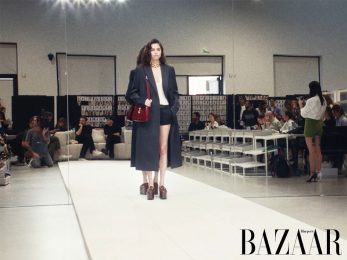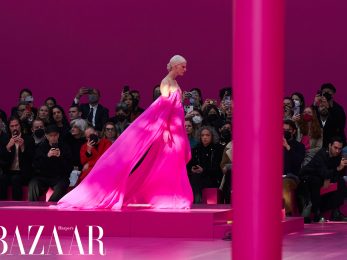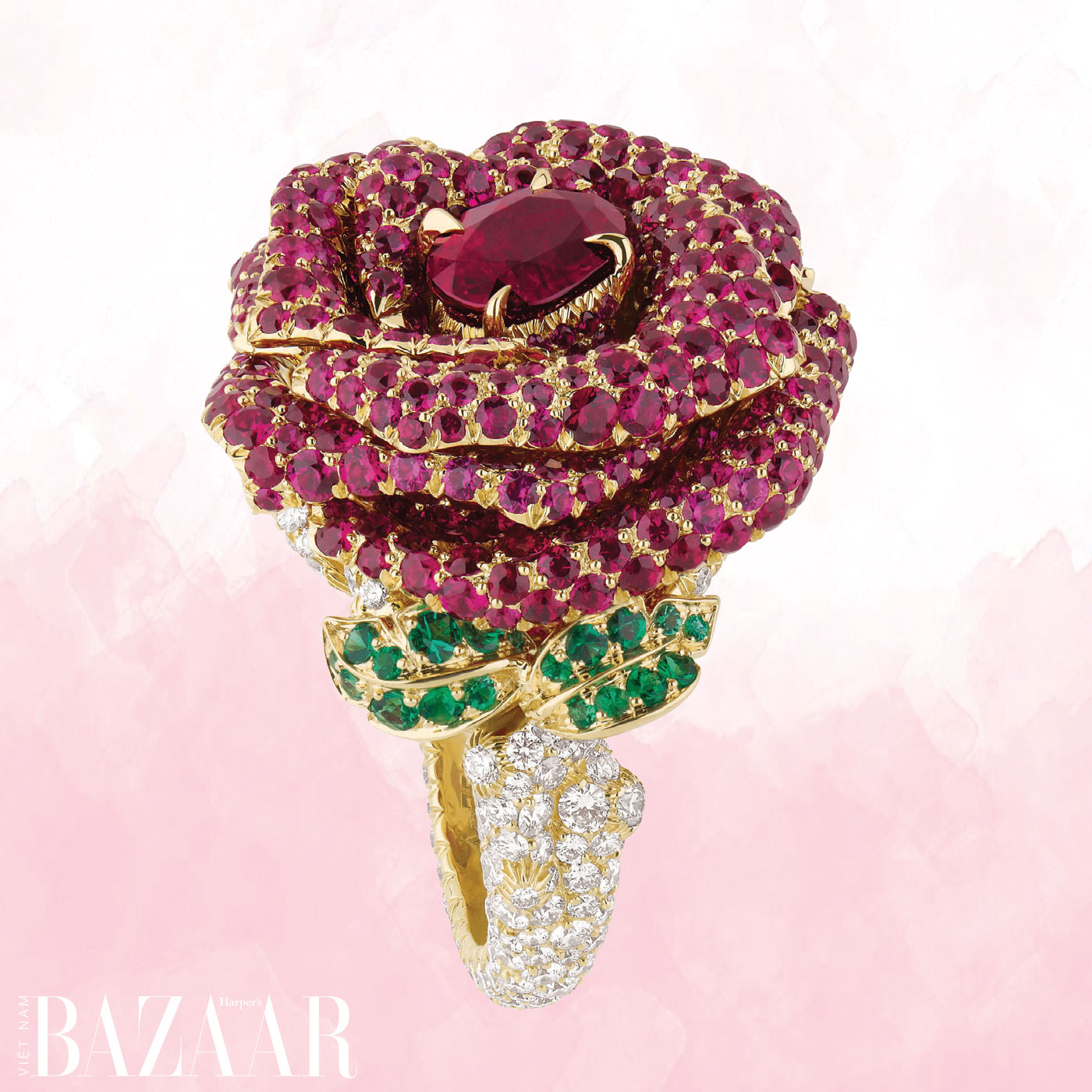
Rose Dior Bagatelle Ring in yellow gold, diamonds, rubies and emeralds, Dior
In fact, ruby is related to sapphire, since both are the same mineral known as corundum. Chemically pure corundum is colorless, but a tiny content of chromium oxide produces “ruby red”. To know more about one of the world’s four main precious gemstones, Harper’s Bazaar have consulted with Roland Schluessel, FGA, about its fascinating properties and what to watch out for when purchasing.
ABOUT THE AUTHOR: ROLAND SCHLUESSELRoland Schluessel was born in Switzerland and spent part of his childhood in Milan, Italy. After graduating from business, management, and marketing schools in Switzerland, he studied gemology in Germany and London, Great Britian, where he was awarded the Rayner Prize in 1985. During his numerous travels to the gemstone centers and mining sites in South America, Africa, Europe and Asia, Roland captured more than 200,000 pictures of gem mining, gemstones, and geological processes such as volcanic eruptions. Roland Schluessel resides in San Francisco. Together with his wife Nata, they own the gemstone wholesale company Pillar & Stone International specializing in fine colored gemstones and jadeite. Roland is also the author of a book about Rubies and Sapphires from Myanmar. |
A brief history of ruby
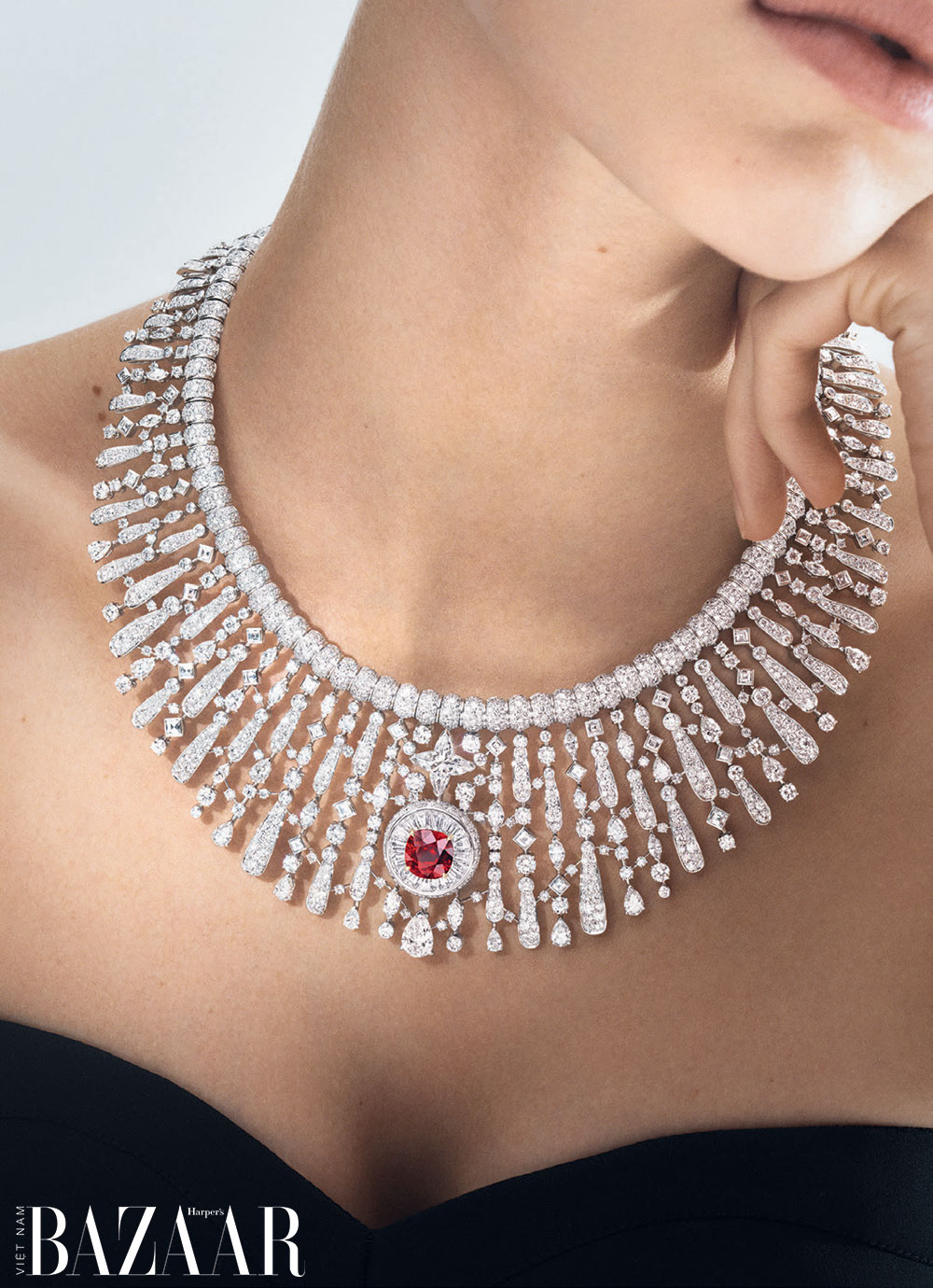
Stellar Times’s Astre Rouge necklace has been designed around a unique pairing of rubies from Mozambique, which required more than two years of research, Louis Vuitton
Throughout history, and in many cultures, ruby has been associated with love, passion, and power. Its vivid red color, associated with fresh blood, heat, and danger, is the most noticeable color of the spectrum. Red is the first color a baby can see.
Until 1477, when the first diamond engagement ring was given to Mary of Burgundy by the Archduke Maximillian of Austria, gemstone-set engagement rings often held a red gemstone, including rubies.
Most large “rubies” in the regalia of European Royals are red spinels, not rubies. Ruby is so rare and so valued, that still today the French expression “payer rubis sur l’ongle”, which translates as “to pay with a ruby on the fingernail”, refers to a cash payment.
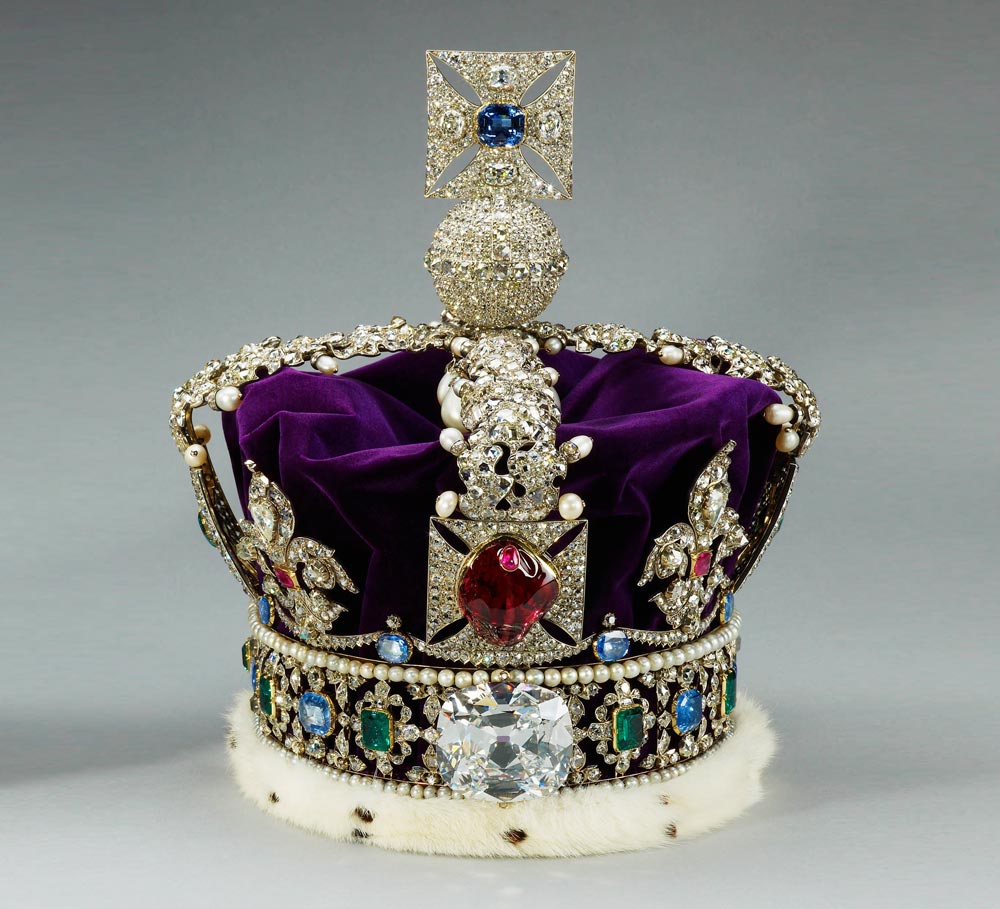
The Black Prince’s Ruby on the British Imperial State Crown is in fact a spinel
Why is ruby scarce?
Chemically, corundum is not particularly rare in the earth crust, but it rarely crystallizes to form quality gemstones. It is the heavier element chromium that produces the cherished red in ruby. Chromium hinders the growth of large crystals; this explains why most rubies are comparatively small gemstones. Also, for the chromium to mix with the lighter elements that compose the mineral, dynamic geologic processes involving the transformation of rocks need to occur over millions of years.
These ruby-forming conditions were met during mountain building about 550 million years ago on an ancient supercontinent known as Gondwana; this included today’s East Africa, Madagascar, Sri Lanka and the southern tip of India. A similar but more recent process giving birth to the Himalayas is responsible for the ruby sources located along the mountain chains from Tajikistan and Afghanistan, through Myanmar, all the way to northern Vietnam.
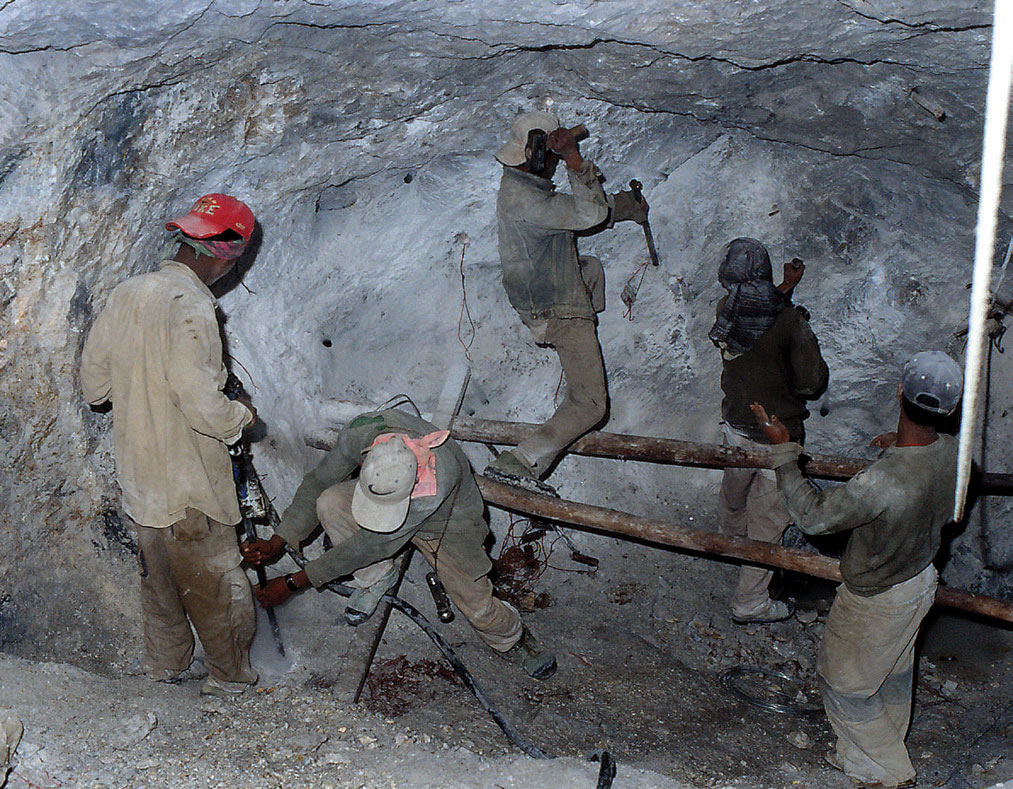
Underground mining for rubies in Mogok, Myanmar. Photo: © Roland Schluessel
Thus, the ideal conditions to form gemstone quality rubies are rarely met on Earth. In fact, the formation of corundum is only possible on a planet blessed with oceans and moving tectonic plates. This emphasizes the scarcity of ruby: at a universal level, ruby might be even less likely to be found on other planets than life itself!
Quick facts about rubies
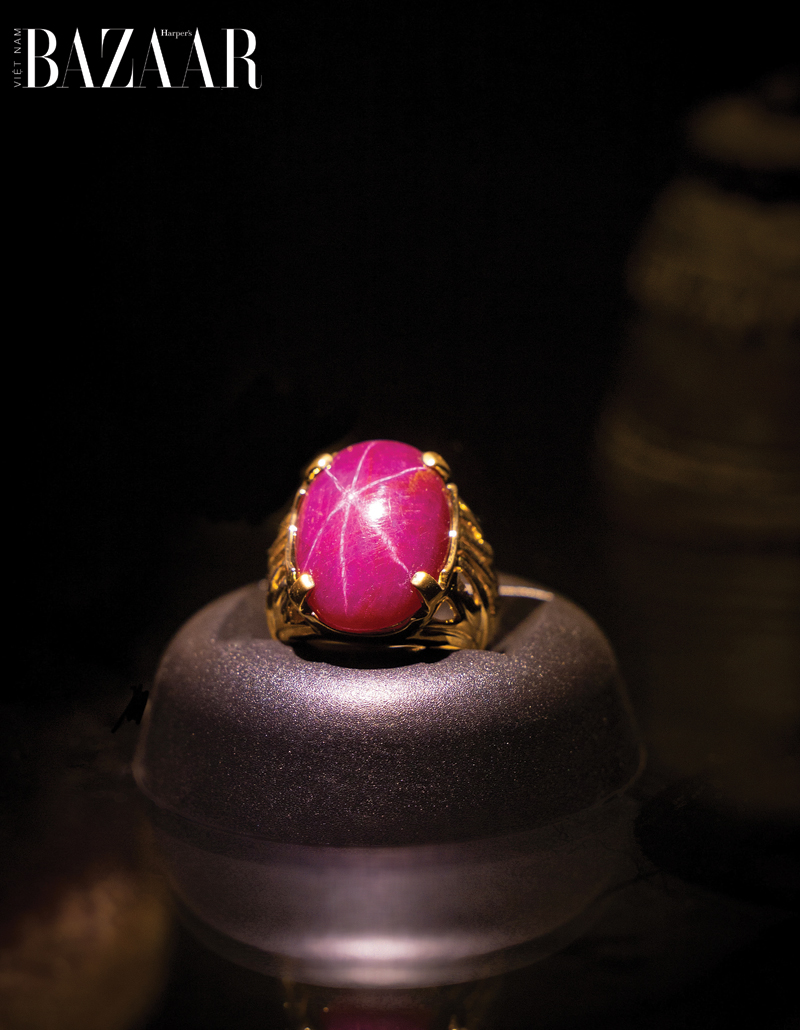 A cabochon-cut Vietnamese ruby with six-rayed star effect |
Facts to know before investing in ruby
1. Carat size
The value of high-quality rubies rises progressively and dramatically with every increasing carat unit; the most significant price jumps apply to 3, 5, 8 and 10ct sizes.

Phoenix-shaped brooch with a Vietnamese ruby displaying strong fluorescence, LEYEN
2. Where are rubies found?
Currently commercially mined in Mozambique, Tanzania, Kenya, Madagascar, Myanmar, Vietnam, Afghanistan, Tajikistan, Pakistan, India, Sri Lanka, and Greenland. Mozambique is presently the major producer, while Myanmar (formerly known as Burma) is historically the most significant source, as it is particularly renowned for producing the most beautiful and most valued rubies.
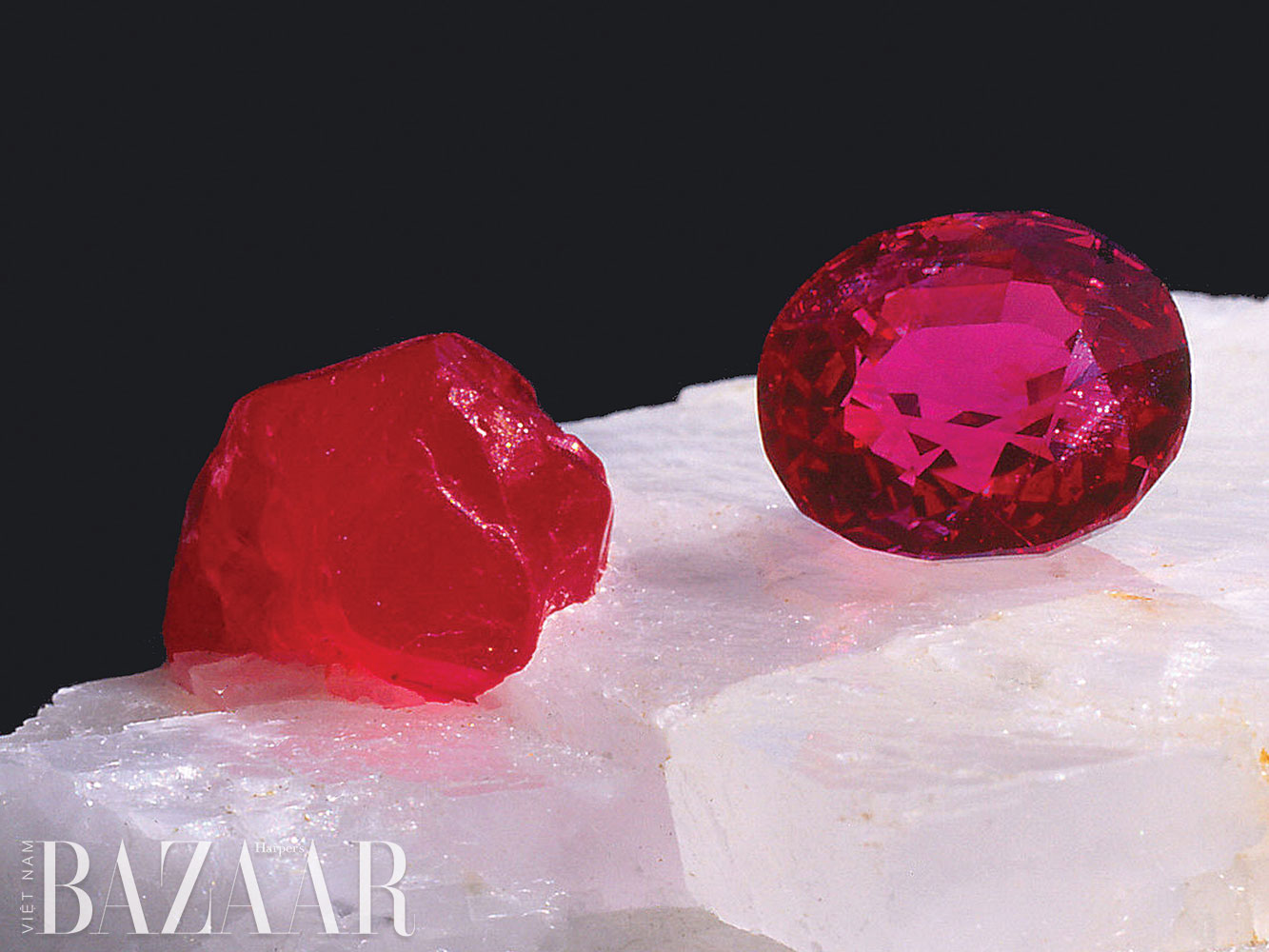
A raw ruby (left) and cut one (right), both from Mogok, Myanmar
The mother rock defines the quality of the rubies it holds. Iron-poor rocks, such as the marble from the Mogok Valley in Myanmar, provide the finest red, while darker, purplish, and brown-toned rubies are found in iron rich rocks. The ruby deposits that were discovered in the 1980’s in the Luc Yen area of northern Vietnam are marble-hosted.
Mozambique is currently the world’s largest ruby producer, and it is most likely to remain for the next thirty years. While Burmese gems represent the highest quality standard for rubies, to which standard any other ruby is compared to, the declining production pushes the prices continuously higher. From the investment point of view, a fine Burmese ruby is like a famous “overage artist” whose years are counted and the number of its artistic works are forever limited and highly sought-after.
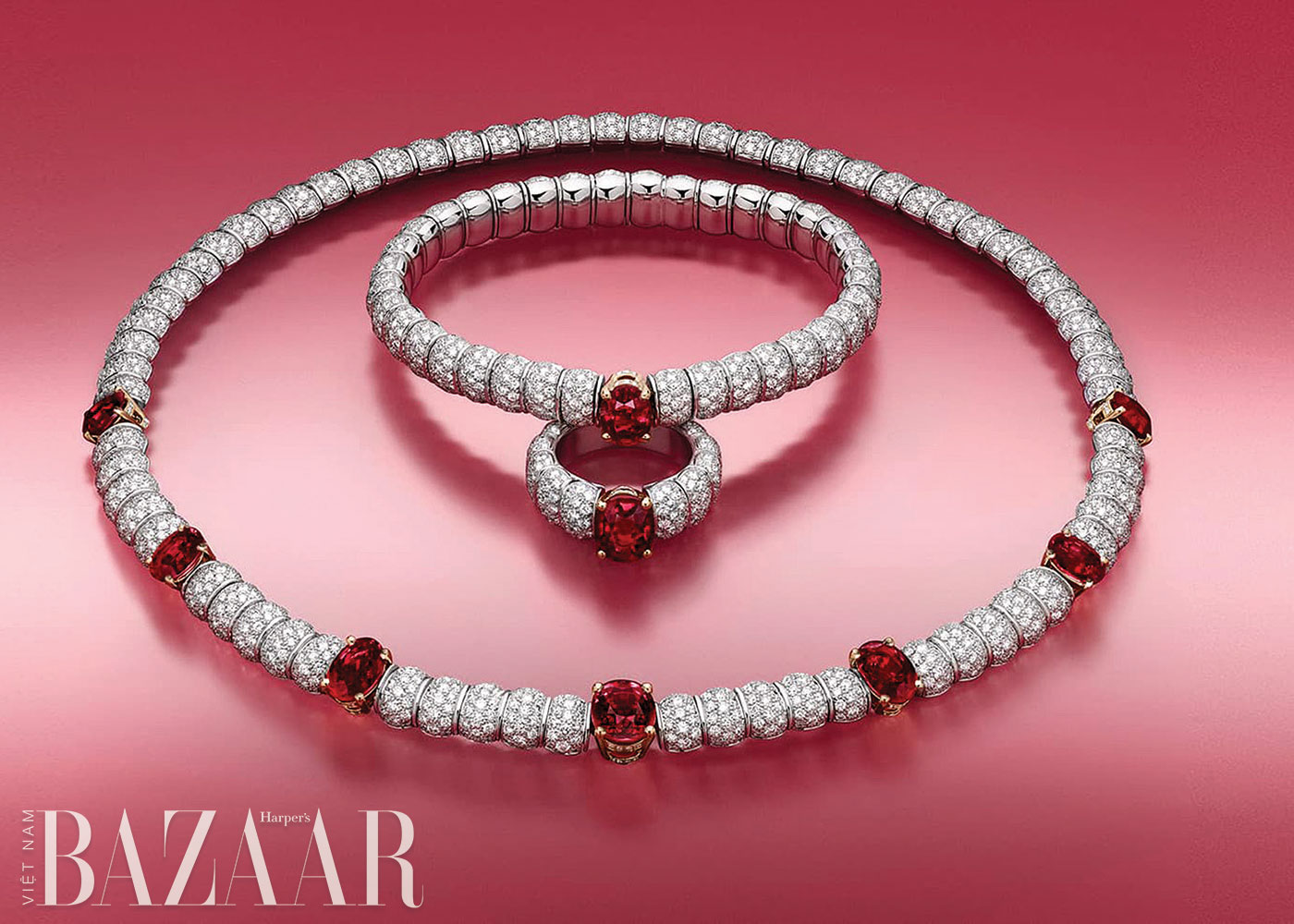
Stellar Times’s Astre Rouge suite, featuring rubies from Mozambique and diamonds, Louis Vuitton
3. What is the best color?
The most desirable ruby color is a well-saturated pure red or red with a minute purplish secondary color. The finest color should be as pure red as possible; any brownish or visible purplish secondary color, and any grayish tone detracts from its beauty and value.
A little bit of a pink within a bright red ruby is often better than an over-saturated dark ruby, but careful not to pay a ruby price for a pink sapphire. Every reputable gemological laboratory works with color standards to define the borderline between a ruby and a pink sapphire. The pink adds to the brightness, while the deep saturation makes the stone look dark, especially in incandescent lighting conditions.
Thus, it is a vibrant, well-balanced red that is the most desirable. In the trade, it is often referred to as “pigeon’s blood” red. It is a carmine red combined with a comparatively strong red fluorescence that supercharges the color of the ruby.

A fine and very rare 18K white gold, diamond and ruby-set dodecagon-shaped watch, Vacheron Constantin
Buyer beware, “pigeon blood” is a trade name that lacks universal standardization.
The seller often pretends his ruby to be “pigeon blood”, and he might even be able to provide a gemological report attesting it; but since there is no agreement on the description of the color, there is a lack of standardization in the certificates.
The most selective gemological laboratories reserve the term “pigeon blood” for non-treated rubies with a pure red to carmine red color, combined with a strong fluorescence, and devoid of obvious inclusions. Such true “pigeon blood” rubies, almost an exclusivity of Burmese rubies from the Mogok region, fetch USD hundreds of thousands for a 3 to 5 carat stone, and up to over USD 1 million per carat for a larger one.
In fact, a gemstone merchant said about it: “Finding a true pigeon’s blood ruby is like seeing the face of God!”.
4. By night and by day…

An extremely rare ruby and diamond brooch, Cartier
The beauty of the color is the most important quality parameter in ruby, and its appearance is affected by different lighting conditions.
Bright rubies, especially those with a slight pinkish tint and those with a strong red fluorescence look particularly bright in daylight, and further increase their red share in incandescent light; they are often referred to as “happy” stones in the trade. On the other hand, rubies that appear deep-toned and over-saturated in daylight look even darker and duller in incandescent light.
Expert advice: Inspect the stone in both lights before buying it and choose the ruby you personally prefer rather than to be influenced by some fancy marketing wording.
ABOUT FLUORESCENCE IN RUBIESFluorescence is the term used to describe the glow effect of a substance when it is excited by light or other electromagnetic radiation. In the context of visible fluorescence in gemstones, we speak about ultraviolet fluorescence which can produce a white glow or any fluorescent color of the visible spectrum. For example, a red fluorescence brightens and additionally charges the red color of a red gemstone, this is a phenomenon that takes place in chromium-rich but iron-poor rubies. The presence of fluorescence does not only affect the beauty of a ruby when exposed to an ultraviolet lamp, but also in daylight, because the sun emits ultraviolet radiation. |
5. Purity
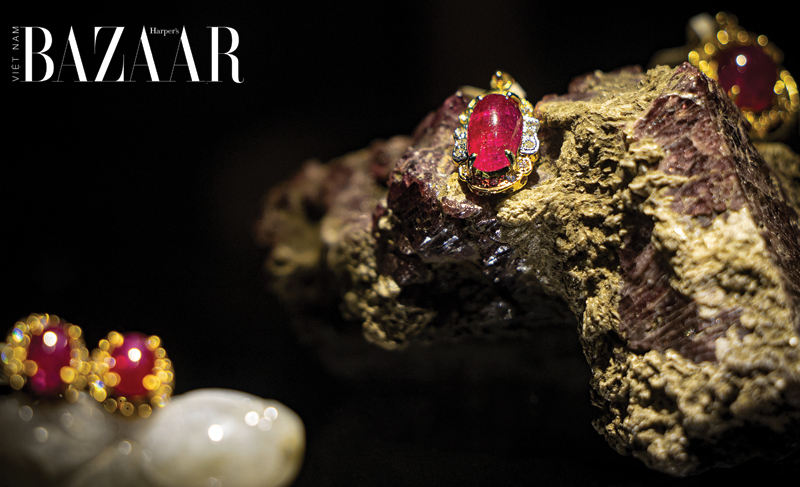
A ring featuring cabochon-cut Vietnamese ruby paired with diamonds, Hamana Group
Most rubies contain inclusions, so that many gemstone merchants have never seen a loupe-clean ruby. In general, one distinguishes between visibly included and eye-clean gemstones.
Rubies mostly host some form of mineral inclusions, or fluid inclusions, or fissures and fractures. If these internal features are readily visible, they detract from the stone’s beauty and significantly lower its value as a consequence. Large inclusions can also slightly alter the color of the ruby, because the light might be reflected at an angle that differs from the best possible color; or worse, it might reduce the stone’s transparency.
Do not be fooled: Synthetic rubies and other ruby imitations contain inclusions as well! Thus, the presence of inclusions is not proof of authenticity. It is the type of inclusions that help identify the nature of the gemstone.
6. Heated vs. Non-Heated
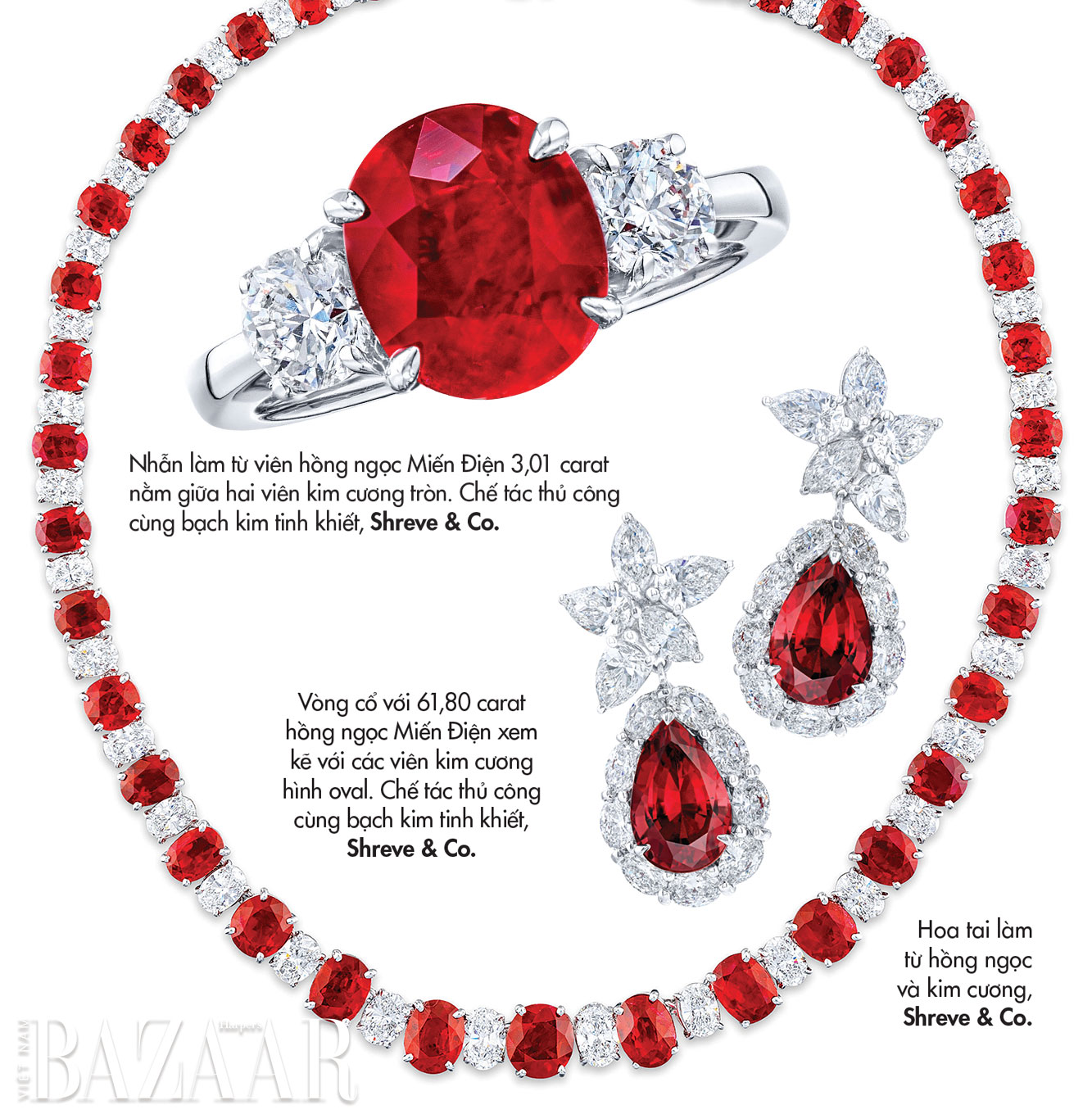
Necklace, rings and earrings combining rubies with diamonds, set in platinum, Shreve & Co
Rubies are heated to alter their color, particularly to remove undesired secondary colors, and also to improve their transparency; the latter is achieved by diffusing some mineral inclusions, often referred to as “silk”.
Among all transparent colored gemstones, the ruby experiences the greatest value difference between a non- treated and a heated stone. This difference can change over time and it increases progressively with size and rarity.
Heating is not the only treatment inflicted to rubies; filling surface-reaching fissures with red “ruby oil”, glass-filling, and addition of color through diffusion, are some examples.
Watch your budget: in the 1 to 3 carat range, a non- heated ruby costs 50% to 300% more than the routinely heated one.
About ruby imitations…
Manufactured glass-corundum stones, lab-grown rubies and other artificial ruby lookalikes are not included in the category of enhanced rubies, they should be regarded as what they are: fakes with a manufacturing cost of anywhere between approximately USD 2 and USD 100 per carat.
Careful, like the most valuable Burmese rubies, most lab-grown rubies have a strong fluorescence.
WHERE TO SHOP: SHREVE & COEstablished in 1852, Shreve & Co. is the oldest retailer in the state of California with locations in downtown San Francisco and Stanford Shopping Center in Palo Alto. As curators of modern luxury, we are committed to providing an exceptional shopping experience while always creating an opportunity for discovery. Each glance throughout our stores exposes a refined array of handcrafted jewelry and timepieces – a chance to reveal the new and different to those who appreciate the world’s most beautiful things. Shreve & Co. is proud to be home to Rolex, Patek Philippe, Panerai, Tudor, IWC, Vacheron Constantin, A. Lange & Sohne, Hearts on Fire, Harry Kotlar, Mikimoto and many more. To discover more from Shreve & Co., Tony Gross can help begin your journey. Please email tgross@Shreve.com to get started. Or, you can visit the official website shreve.com. |
Harper’s Bazaar Vietnam




